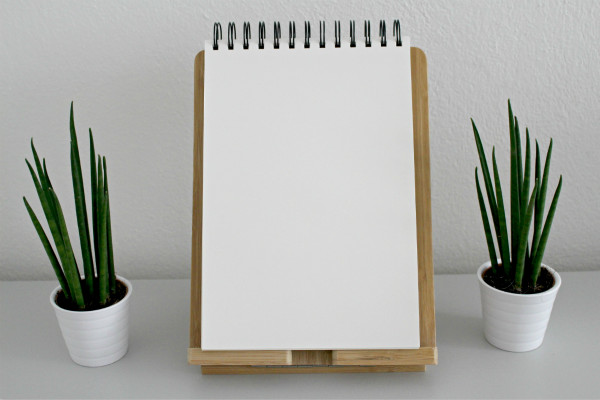仁爱版2017九年级下册英语复习资料

◆ unit11 Could you please tell me where the restrooms are? 目标语言:ask for information politely 重点句型:P86-1a&1c,P87-2a&2c,p88-3b&4 要求背诵的是p88-3a 知识点: 1. 宾语从句的定义:宾语从句就是在复合句中作主句的宾语。 2. 宾语从句的引导词:1)连词that引导的宾语从句,在口语和非正式文件中可以省 略。2)由连接代词what, which, who, whose或连接副词when, where, why, how等词引导的宾语从句。3)由连词if或whether引导。如,I hope that you will have a good holiday. He asked who could answer this question. They don’t know if they will visit the history museum tomorrow. 3. 宾语从句的语序:宾语从句的语序应当用陈述语序。即,从句的连接词后面是主语 +谓语+宾语的语序。注意连接词在句子中当主语时,后面直接跟谓语和宾语。如He asked who could answer these questions. Could you tell us what time the plane leaves? 4. Perhaps, maybe, probably: perhaps表示“可能,也许”,之意但不能肯定,它修饰整 个句子。Maybe为副词,表示“或许,大概”之意,一般用于句子的开头,常用于口语。Probably有可能性较大的意味,可以位于句首,也可以位于谓语动词前,情态动词,助动词或be动词的后面。 5. both, either, neither: both表示“两者都”;either表示“两者中的任何一个”;neither 表示“两者中任何一个都不”。1)作形容词时,neither,either修饰名词的单数形式,both则修饰名词的复数形式。2)作代词时,neither,either通常被视为单数,both 用作复数。作代词时,both还可以作同位语,neither, either则不可以。3)neither…nor意思为“既不…也不…”;either…or意思为“或是….或是…”;both…and…意思为“双方都….;既….又…”三者均为并列连词。即连接两个相同的句子成分。当neither…nor, either…or连接句子的两个主语时,其后谓语动词通常和最邻近的主语在人称及数上保持一致。Both…and….连接句子的两个主语时,其后的谓语动词通常使用复数形式。 6. dress, have on, put on, wear: dress作及物动词用时,指“给某人穿衣服”,dress既可 以表示动作,也可以表示状态。Dress表示替别人穿衣服时,接表示人的名词或代词作宾语。如,The mother dressed her son quickly and took him to the kindergarten. Dress表示自己穿衣服这个动作时,接反身代词作宾语,或者用作不及物动词。如,Lily is old enough to dress herself. Dress作不及物动词用,意思是“穿衣,穿礼服”。 ◆ unit 12 You’re supposed to shake hands. 目标语言:Tell what you are supposed to do 重点句型:P95-2b&2c, P97-1&2b 要求背诵的是P98-3a 知识点: 1. be supposed to do sth.:be supposed是suppose一词的被动语态结构。后接动词不定 式时,含义相当于should后接不定式。但should后面的不定式要省略不定式符号to,且属于主动语态形式,使用起来较严肃和正式;而be supposed to do sth的使用教随便,建议性强。否定式为be not supposed to do sth.,另外ought to do sth也是其一个同义表达的形式,但要注意表示过去时,ought后接完成式的不定式,使用时需要灵活掌握和运用。如You are not supposed to shake hands.= You shouldn’t shake hands.= You ought not (oughtn’t) to shake hands.你不应与之握手。 2. Unfamiliar的用法:为形容词,意思为“不熟悉的;没有见过或听过的”,其同义 为strange,其反义词为familiar.1) be unfamiliar to…表示“不深知的;生疏的”如, That face is unfamiliar to me.那副面孔我很生疏。2)be unfamiliar with…表示“没听过,没听见,不熟悉的”如,I am unfamiliar with their music.我没听过他们的音乐。 3. used to do sth, be used to do sth, be/get used to sth./ doing sth.: 1) used to do sth意思是 “过去常常做某事;过去曾经做某事”,表示过去发生的动作,其中的to do sth为不定式结构。如,I used to take piano lessons.我过去上钢琴课。2)be used to do sth意思为“被用来做某事”,其中的to do sth是不定式结构。如,Paper is used to make kites.纸用来做风筝。3)be/get used to 表示“习惯于”,如果get/be used to后面接动词时,则要使用动词-ing形式。如,She is used to living in the country.她习惯居住在农村。 4. most, mostly, the most:1)most可修饰动词,意思是“最,第一”如,That problem troubles him most.那个问题最使他头痛。Most常可作very 用,修饰kind, helpful, grateful, beautiful等表示主观感觉的形容词和副词。这时不表示比较,不能和the连用。如It’s most kind of you.你真好。Most作代词用,意思为“大多数的,最多的,的”。其反义词为fewest,least.2)mostly为副词,表示“大体上,大部分”等意思。如She is mostly out on Sunday.星期天她多半不在家。3)the most表示“数量,限度”。如,This is the most I can do.这是我力所能及的。 5.Except, besides,but都含有“除了,除…外”的意思。1)except意思为“除…外(不再有)”,其前常接all, any, every, no及其复合词等词。如I answer all the questions except the last one.除了最后一个问题灭有答上外,其余问题我都答上了。2)besides意思为“除…外(还有)”如,I have a few friends besides you. 除了你之外,我还有几个朋友。3)but后接名词,代词和原形动词,可以和except互换,但except后接副词,介词短语时,不能用but 来代替。如,Mary did nothing except/ but clean the dishes.玛丽只洗盘子。 6.point at, point to, point out: point意思为“指着,指向”,在用事物名词作主语时,一般和point to连用,在用人物名词作主语时,常用point at.如,Our teacher is pointing at the map on the wall.我们的老师在指着墙上的地图。The land of the clock points to six.时钟的针指向六。2)point at可以分开来理解,也就是point后直接跟名词或代词作宾语,at 表示方向,point to没有这种用法。3)point out是“指出“的意思,属于“动副”结构的短语,虽可跟宾语,但若是代词,须放point和out之间。如,Can you point out the church in this picture?你能指出这张图画中的教堂吗? ◆unit 13 Rainy days make me sad. 目标语言:talk about how things affect you 重点句型: P102-1b&1c, P103-2b, P105-2a 要求背诵的是:P104-3a 知识点: 1. make的用法:1)make+名词/代词+形容词或形容词短语 如,The good news made us happy.这条好消息使我们很高兴。2)make+名词/代词+省略to的动词不定式 如,They made us laugh.他们让我们大笑起来。3)make+名词/代词+介词短语或名词短语 如,The boss made her his assistant.老板让她作自己的助理。4)make+名词或代词+过去分词短语 如,Can you make yourself understood in English?你能用英语把意思表达清楚吗?5)make it+时间 如,Let’s make it half past two.让我们把时间约定在2:30吧。 2. would rather, prefer: 1)prefer是一个行为动词,后接带to的不定式,表示一 个具体的特定行为,意思为“更喜欢”。如,He preferred to have a part-time job.他宁愿找一份兼职工作。2)两者接不定式时,分别与than和rather than搭配,即prefer to do…rather than do…意思为“宁愿做…而不愿做….”,would rather do…than do…意思为“宁愿做…而不愿做…”.如,Liu Hulan preferred to die rather than surrender.= Liu Hulan would rather die than surrender.刘胡兰宁死不屈。3)prefer…to…相当于like…better than…意思为“喜欢….更胜过喜欢…..”。其后接名词,代词,动词-ing形式。如,I prefer tea to coffee.我喜欢喝茶胜过喜欢喝咖啡。4)prefer和 would rather后都可接从句,从句要用虚拟语气。Prefer后接从句时,用 should加动词原形的形式,should也可以省去,而would rather后接从句时,要用过去时态表示现在和将来,用过去完成时态表示过去。如 I would rather you came on Sunday.我倒希望你星期天来。I prefer that we(should)do it in another way.我更希望我们用另一种方式做这件事。 3. learn…from, learn of, learn…by: 1)learn…from后接表示人的名词,意思为 “向…学习”;后接表示事物的名词,意思为“从…中学习”。如,We must learn from Comrade Lei Feng.我们一定要向雷锋同志学习。We have learnt a lot from your lecture.我们从你的报告中学到了很多东西。2)learn of后接表示人或事物的名词,意思为“听说,了解到”,相当于hear of。指间接地获得信息,有时可用介词about代替of,但learn about还有“学习有关方面知识”的意思。如,We were sorry to learn of his failure.听到他失败的消息我们非常遗憾。3)learn..by后接表示事物的名词或动词。接表示事物的名词时,意思为“从…学习”,可与learn from互换;接动词-ing形式时,意思为“通过…方式学习”。如You should learn a language by speaking it.你应当通过说的方式来学习一种语言。另外,learn …by heart是“熟记;背下来”的意思。如You should learn all the words by heart.你应当把所有的单词都背下来。 4. other, another, the other, others, the others: 1)other作前置定语时,修饰单数或复 数名词。如I will come again some other days.我改日再来。2)another用于泛指三者以上的不定数目中的“另一个”,其所修饰的名词前不加冠词。如I don’t want this one. Please give me another.我不想要这个,请给我另一个。3)the other表示两者中的“另一个”或两部分中的“另一部分”,是特指。如There are six people in the room.Four are girls, the other two are boys.房间里有六个人,四个是女孩,其余两个是男孩。4)others用作代词,泛指“其他人”或“其他事物”。如,Some are singing and dancing, some are drawing ,others are climbing the hill.一些人在唱歌,跳舞,一些人在画画,还有一些人在爬山。5)the others指整体中除去一部分后,剩余的全部。如 There are fifty-five students in our class. Thirty of us are girls. The others are boys.我们班有五十五名学生,三十人 是女生,其余的是男生。 5. compare…to…意思“把…比作….”着重注意两者间的相似点。如,Young people are often compared to the sun at eight or nine in the morning.年轻人常被比作早晨八,九点钟的太阳。2)compare…with…意思为“拿….与…相比,把…与…相比较”,侧重指两者间的区别。如,Compare your composition with hers and you will see whose is better.如果把你的作文与她的加以比较的话,便知谁的较好了。 6. carry, bring, take , get, fetch: carry的意思是“携带,搬运,负担”,即把某人带 在身边后把某物带在身上,指随身携带,并将它从一处带到另一处。携带的方式可以是提,扛,背,抱,抬等。Carry不说明带的方向。2)bring的意思是把某人或某物“带来,拿来”,强调方向,即从别处拿到说话人这儿来,而不强调带的方式,其后可跟双宾语。3)take的意思是把某人或某物“带走,拿走”,即说话人这儿带到别处去。4)get和fetch的意思相近,表示到某处去把某人找到并带来,或把某物找到并取来。Get常用于口语中。 ◆ Unit 14 Have you packed yet? 目标语言:talk about recent events 重点句型:P111-2a&2b,P114-4 要求背诵的是P112-3a 知识点: 1. 现在完成时的构成:have/has+动词的过去分词 2. 现在完成时的肯定句: 主语(第一,二人称单复数,第三人称复数) 主语(第三人称单数)+has +动词过去分词 3. 现在完成时的否定句:主语+have/has+not+过去分词 4. 现在完成时的疑问句及回答:Have/Has +主语+过去分词? 5. 现在完成时的用法:1)表示一个过去发生并结束的动作对现在产生的结果和影响, 可以细分为下列两种情况:a.表示开始于过去的动作刚刚结束,常和just, now , already, yet等连用。如,I have finished my homework now.现在我已经做完作业了。b.表示过去动作的结果现在仍残留着,一般不和时间状语连用。如I have lost my pen.我把钢笔弄丢了。(说明过去某时丢的,现在还没有找到这支钢笔)。2)表继续(动作未结束)。如 I have lived here since 1989.我自从1989年就住在这。(表示现在仍住在这)【注意】表示过去已经开始,持续到现在,而且还继续下去的动作或状态。 6. 现在完成时与一般过去时的区别:两种时态都表示过去发生的动作,但现在完成时 强调这一动作与现在的联系,对现在产生的结果,影响等,而一般过去时则只表示过去的事实,不表示和现在的关系。表示过去固定时间状语只能与一般过去时连用,而不能与现在完成时连用。表示过去时的时间状语:yesterday, last week, a week ago, on Friday, just now, in the evening, the other day。现在完成时的时间状语:since Monday, until now, for a long time, since I came here, since last week, up to now, lately, recently. 7. look for, find , find out, search: look for表示“寻找”,强调找的动作或过程。2)find 表示“找到”,强调找的结果。3)find out表示“找出,查明”之意,指经过调查,观察,询问或研究等手段发现或找到。4)search是指对某一处所,人身进行搜查或指寻找想找的人或物,后面可以接介词for,但比look for语气更强些。 8. go on的其他用法:go on意思为“继续”时,有下列几种用法:1)go on doing sth. 意思为“继续做某事”2)go on to do sth意思为“继续做(另一件事)3)go on with sth有时与go on doing互换使用,意思为“继续做某事”。 9. in the last/past +数字+名词表示“在过去的….时间里”,常用于现在完成时的句子中。 10.get back意思为“取回”;get back意思为“回来”,相当于return 11.yet, already:yet用于否定句和疑问句中。Already主要用于肯定句中,用于疑问句中 时常表示惊讶。2) yet常放在句尾,也可以紧跟在not的后面,而already则常放在句中。 ◆ Unit 15 We’re trying to save the manatees! 目标语言:Debate an issue 重点句型:P119-2a,P120-4 要求背诵的是P120-3a 知识点: 1. be proud of…, be proud to do sth, be the pride of…:1)be proud of表示“以…为自豪/ 骄傲”2)be proud to do sth表示“骄傲/自豪去做某事”3)be the pride of表示“是...的骄傲” 2. be suitable for适合的,恰当的 3. be made from, be made of:1) be made from指制成的东西完全失去了原材料的外形或 特性,原材料发生了本质的变化,在成品中已无法辨认。2)be made of意思为“由…构成,由…制成”,但be made of是指未经变化,仍可以看出原材料是什么,保持了原材料的质或形状。 4. 长,宽,高的表达法 :数字+量词+形容词。如20 metres wide二十米宽 5. Little, small, tiny: little是一般用语,与great和big相对;small含有“比较小”的 意味,与large相对;tiny常和little通用,但little侧重指形体小的,常带有爱惜,赞赏,轻蔑等情感的意味;tiny表示非常小,带有较强的感情色彩;small是就实体而言,按平均大小对比,是“比较小的”,侧重度量,面积,数字等;little也表示“小”,往往指不可数的量。 6. Feed on吃…过日子; 用…喂养 7. Foot的用法:on foot 步行 foot by foot一步一步地 at the foot of在…脚下on one’s feet站立着 set foot in踏进 stand on one’s own feet自立
好消息:广东地区未达到普高分数线的同学,可点击下方按钮咨询客服,就有机会报读高职高考班,获取职校报考全日制大专、本科名额!
 中学
中学
 大学
大学
